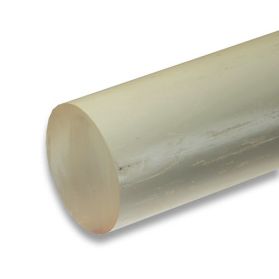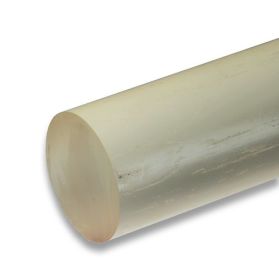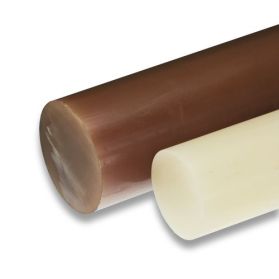Polyurethane (PUR)
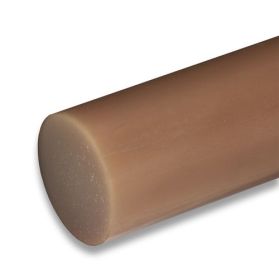 PUR D15 round bar light- to dark brown 92 ±5 Shore A, 80 - 160 mmNumber of articles in this product: 5
PUR D15 round bar light- to dark brown 92 ±5 Shore A, 80 - 160 mmNumber of articles in this product: 5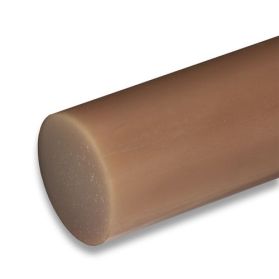 PUR D15 round bar light- to dark brown 92 ±5 Shore A, 10 - 70 mmNumber of articles in this product: 10
PUR D15 round bar light- to dark brown 92 ±5 Shore A, 10 - 70 mmNumber of articles in this product: 10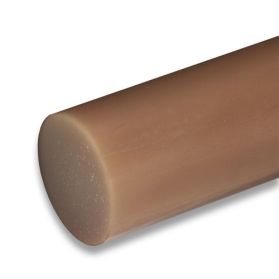 PUR D15 round bar light- to dark brown 80 ±5 Shore ANumber of articles in this product: 10
PUR D15 round bar light- to dark brown 80 ±5 Shore ANumber of articles in this product: 10
Material properties of polyurethane (PUR)
Polyurethanes (abbreviation PUR) are materials or synthetic resins which are produced from the polyaddition reaction of a polyester or a polyether and a polyisocyanate. Polyurethanes can have completely different properties depending on the choice of isocyanate and alcohol. The hardness gradation is achieved by choosing different ratios of the raw materials (no plasticizers).
The urethane group is characteristic for polyurethanes. Polyurethanes can be foamy or solid, be hard, brittle, but also soft and elastic The glycol cross-linked polyurethane elastomers described here are a compact PUR, which is poured into open moulds in a hot casting process. This oldest and best-known polyurethane elastomer has unsurpassed high mechanical property values compared to all other types. The rubber-like, elastic behavior, combined with excellent abrasion and tear resistance, enables applications where synthetic rubbers would fail.
APSOplast® PUR D15, light to dark brown
PUR D15 is a high-quality polyurethane with unrivalled abrasion and structural strength, but not resistant to the effects of hydrolysis. Compared to the other PUR elastomers PUR D15 has an increased heat resistance. Short-term temperature loads of up to +120 °C are possible. However, the permanent load of the material should not exceed +100 °C. Another advantage of PUR D15 compared to other PUR elastomers of the same Shore hardness is a higher modulus of elasticity and thus a higher load-bearing capacity with less permanent deformation. The hardness of PUR D15 is available from approx. 70 Shore A to 92 Shore A.
APSOplast® PUR D44, red brown
PUR D44 is a high-quality polyurethane with good abrasion and structural resistance. Towards PUR D15 somewhat cheaper, also more hydrolysis resistant, but less suitable for dynamic stressed parts. PUR D44 should not be used at continuous temperatures above +80 °C. Short-term loads up to +100 °C are possible, however. The hardness of this material is available from approx. 70 Shore A to 92 Shore A.

